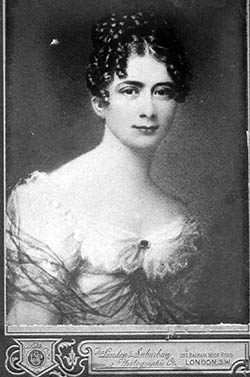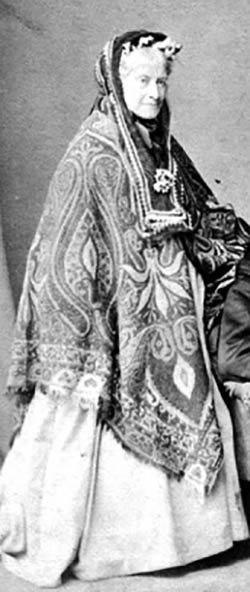Elizabeth DICKINSON 1795 - 1876
Ninth child, fourth daughter of Thomas DICKINSON RN (1754–1828) and Frances de BRISSAC (1760–1854)
Born 16th November 1795, Plumstead, Greenwich.
Died 14th April 1876, Clapham, London. Buried in Brookwood Cemetery, Woking.
Married 17 August 1719 to Joseph PHELPS (1791–1876)
Children
1) Elizabeth (Bella) PHELPS 1820 – 1893
2) Mary PHELPS 1822 – 1896
3) Anne (Kitty) PHELPS 1824 – 1895 m. Robert BAYMAN 1820 – 1881
4) Frances (Fanny) PHELPS 1826 – 1890 m. John EVANS 1823 – 1908
5) Harriet PHELPS 1828 – 1925 m. John CROMPTON 1815 – 1889
6) Joseph Francis PHELPS 1829 – 1922 m. Fanny ROBINSON 1841 – 1924
7) Clara PHELPS 1831 – 1897 m. John OAKLEY 1834 – 1890
8) Charles PHELPS 1833 – 1908
m. 1) Agnes NEALE 1844 – 1876
m. 2) Katherine WILKINSON 1842 – 1911
9) William PHELPS 1836 – 1911 m. Katherine GLASSE 1842 – 1908
10) Arthur PHELPS 1837 – 1920 m. Carolyn Ann PEYTON 1833 – 1904
11) Jane (Janey) de Brissac Frederica PHELPS 1842 – 1926
Elizabeth
Elizabeth grew up at Bramblebury, her family's home in Plumstead. From letters written by her in later years, we gather that she led a happy childhood, was educated at home, and attended balls, musical concerts and various social engagements. She had just turned 23 when she received a proposal of marriage from Joseph PHELPS, twenty-seven-year-old son of a Madeira merchant, whom she had met while he was visiting relatives in England. They were married the following year and a vastly different lifestyle awaited her, to which she rapidly adjusted.
Elizabeth lived in Funchal, Madeira from the time of her marriage, at first in "Little Carmo", across the street from Carmo House, and later in the larger home. She learnt to speak Portuguese and took an active part in the life of the local community as well as that of the many British or Europeans who lived on or visited the Island. She also made many visits to England, sometimes for health reasons, or to take children there to attend school.
She established a school for girls in Funchal, based on the Lancaster method, aiming to provide an education in reading, writing, arithmetic, sewing and housework. Elizabeth and her husband entertained most of the notable visitors to Madeira and affluent visitors often made donations towards the costs of the school.
Elizabeth visited many parts of the island and undertook some quite adventurous journeys into the hinterland. She organised groups of ten or twelve people who would climb into the mountains, being carried some of the way in hammocks. They would sleep in shepherds' huts, tents or sometimes rented cottages, and spend a week or two enjoying the clean air and magnificent views. The Reverend and Mrs Lowe and other residents or visitors would often join the party and camp nearby.
The family spent much of their time at Quinta do Prazer in Monte, where Elizabeth created beautiful gardens. These are now incorporated in the Monte Palace Tropical Gardens. Elizabeth became well-known for arranging large picnic parties, when each guest would be given a tree to plant at the site. The trees flourished and the sites were later known as "Mrs Phelps's picnic places."
Elizabeth and Joseph lived for the last 14 years of their lives at the home they bought in Clapham, which they named Carmo. Most of their children were living in England and they were able to see some of their grandchildren from abroad who came to England for schooling. They also enjoyed musical entertainments and visits to garden shows and parties.
Elizabeth died at home, aged 80, 11 days after her husband and was buried next to him.
Letters written by Elizabeth, Joseph and the children form the basis of The Phelps Family and the Wine Trade in 19th Century Madeira by Anthea Boylston and Penelope Forrest, published by Amazon in 2017.

